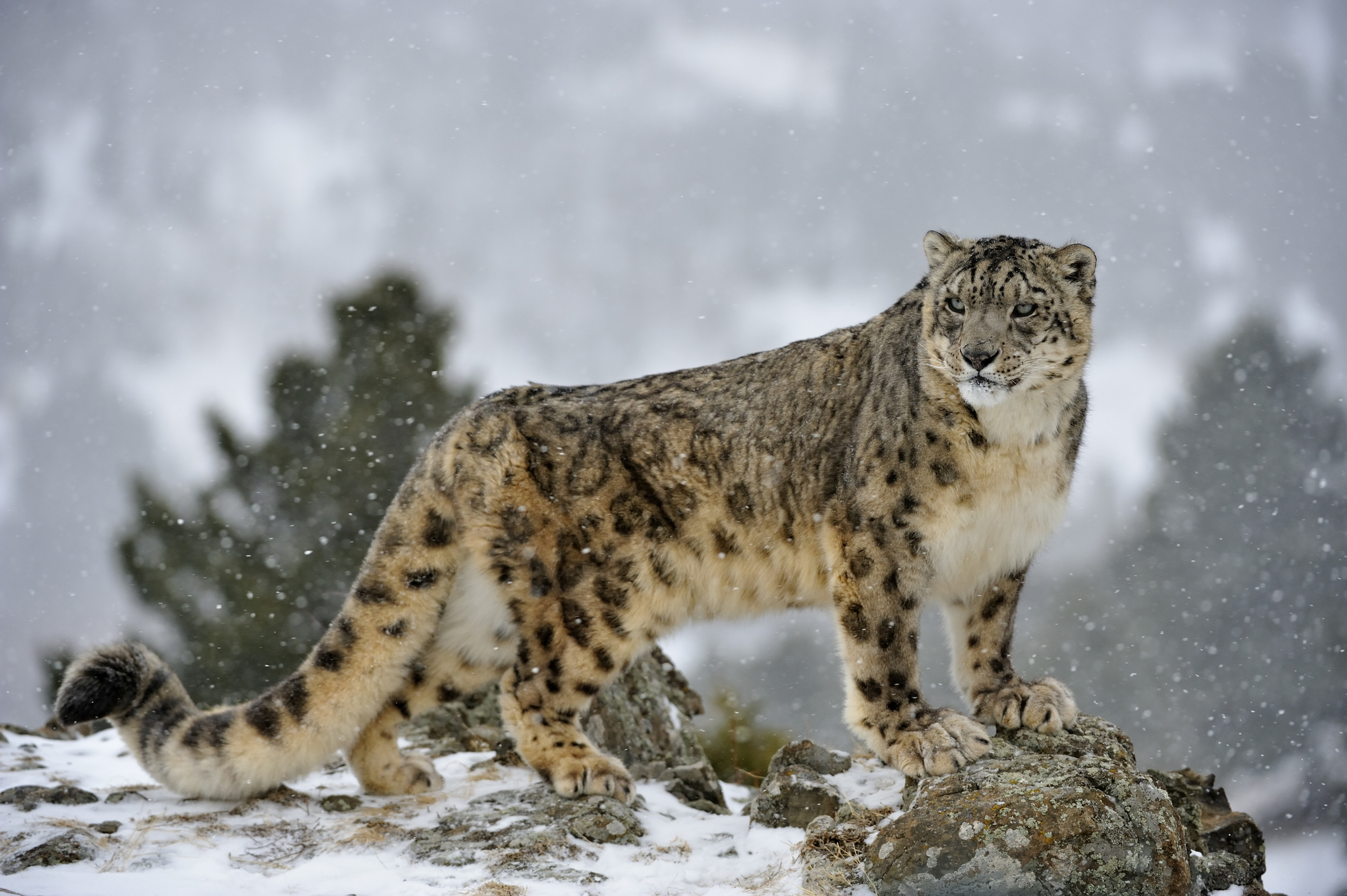There are more wild cats out there than just lions and tigers. Get to know some of the world’s most elusive and rarest felines.

Did you know there are 41 distinct species of cat, from fearsome lions and tigers, to the well-known and beloved domestic cat? And that some cat species can count themselves among the rarest animals on earth and on the brink of extinction?
Wild cats are found on every continent except Australia and Antarctica. Not all of them are as ubiquitous as our precious moggies however, some cats are vanishingly rare and are amongst the most threatened animals on the planet.
More than 40% of wild cat species are classified as endangered or threatened, and they face many pressures including habitat loss due to human activities, and illegal hunting for their fur, bones and claws. Often solitary and reclusive animals, cats can be very hard to study, and so the risks they face are often not well known and they can fly under the conservation radar.
This is especially true of small cats, much less known than the famed big cats, who are often the poster-children of conservation organisations. Many on this list fall into the small cat category. Read on to learn about these elusive but fascinating animals and the threats they have to contend with.
The rarest cats in the world
Iriomote Cat

The rarest cat in the world is the Iriomote Cat. A subspecies of the Leopard Cat, this cat lives only on the small and remote Japanese island of Irimote. There are thought to be as few as 100 left in the wild and the population is declining.
About the size of a domestic cat they have brown/grey fur interspersed with bands of dark spots and a fat stumpy tail. Their preferred habitat is the lower elevations of the island, amongst wetlands, rice paddies, small hills, and even beaches.
Their diet is very varied and includes crabs, bats, and frogs, as well as the expected rodents and other small mammals.
Sadly, although they are not directly hunted, they are sometimes caught up in hunting traps set for wild boar, and are considered a delicacy when they are. They also face threats from traffic collisions, dog predation, and like the Scottish wildcat, inter-species breeding with domestic cats which has diluted their genetics.
Amur Leopard

The next on our list is thought to be the most endangered big cat in the world. One of eight subspecies of leopard, the Amur leopard has been brought to the brink of extinction by habitat loss, declining prey numbers, and notably, the illegal wildlife trade.
It is easy to see why this cat might be particularly prized by poachers – its beautiful spotted fur coat. Its bones are also highly valued for use in traditional Asian medicine.
How many Amur Leopard are left in the wild?
Relentless illegal hunting has pushedAmur leopard numbers to fewer than 100 wild individuals in recent decades and they are listed as critically endangered. However, hard work from conservationists has had some positive effects, with now at least 120 adults thought to be prowling the pine forests of Russia and China. Thanks to greater protections and enforcement of anti-poaching laws the population currently seems to be stable and increasing.
Sumatran Tiger

Also known as Sunda tigers, after the island group on which they are found, these cats, though majestic are the smallest type of tiger.
As with leopards, there is a substantial illegal market for their pelts, which has contributed to their decline.
How many Sumatran Tigers are there left in the wild?
Their populations are small and fragmented across the Indonesian island of Sumatra, with as few as 400 individuals thought to be left in the wild. As well as poaching habitat loss has been a major driver of population decline in these tigers. In particular, the replacement of forests with palm oil plantations has been devastating to them in terms of loss of prey opportunities.
Strict protections have been put into place to try and preserve Indonesia’s remaining tigers. Many of them now live within patrolled national parks, and as well as governmental laws a religious decree (a fatwa) has been instituted by the Muslim country against poachers.
Andean mountain cat

As the name would suggest, these small wild cats are found at high altitudes in the Andes mountains of South America. They are adapted to live in elevated rocky environments, with thick fur to keep out the chill and a fluffy tail to give them superior balance.
This specialisation means that their populations are quite small and patchy. They unfortunately face many threats, as with a number on this list the encroachment of human agriculture into their territories is a major one. This has led to habitat loss and also human-wildlife conflict. They are often killed by local farmers and herders in retaliation for predation of their small domestic livestock, in addition to being hunted for food and traditional medicine.
The Andean cat is also considered to be a sacred animal by some indigenous peoples, particularly in Bolivia, Peru and northern Chile. This does not provide them with protection, however, quite the opposite. Dried and stuffed specimens are prized for use in harvest festivals, and hunting for these reasons is one of the major threats to this species.
Iberian Lynx

This Mediterranean forest feline was once the world’s most endangered cat. The tale of the Iberian Lynx is somewhat of a conservation success story, in that it really did come back from the brink. In 2002 it was on the edge of extinction with only 94 individuals left in two separate and isolated populations.
Since then very intensive conservation efforts that have included habitat restoration, restocking of rabbits (the prey animal that makes up over 80% of its diet), translocations, and reintroductions of captive-bred lynxes has seen their numbers steadily increase.
In 2023 there were an estimated 1688 individuals. The species is still listed as endangered however, and faces many remaining threats, from climate change to deadly diseases.
Borneo Bay Cat

Found only on the island of Borneo (an island divided up and owned by three different countries), this curious cat is a bit of a mystery. Due to its rareness and shy nature, not very much is known about it. It is very hard to find, much less to study. It is in fact so elusive that after its discovery it was lost to science for more than 60 years.
Looks-wise it is very striking, with vibrant chestnut fur and bright yellow eyes. Due to the lack of data we have about it, the threats it faces are not well known, but it is assumed to be vulnerable to many of the pressures faced by Bornean wildlife, including deforestation due to palm oil plantations, and the illegal wildlife trade. Deforestation is a major conservation in Borneo, with the island having lost 50% of its forest cover between 1973 and 2015. This is the primary cause of habitat loss for the island’s fauna, including the cryptic Bay cat.
Flat-headed Cat

This cat almost doesn’t look like a cat at all, with its big close-set eyes and slender body it is perhaps more reminiscent of some sort of lemur. It does however belong to the same genus as the Leopard cat amongst others. It is named for its elongated skull, which allows them binocular vision and thus good depth perception, useful for a hunter, and especially one that captures prey from water. This cat feeds primarily on fish which it grabs directly out of the water, often submerging its head completely when doing so. Because it depends so completely on wetland habitats, it faces many threats. Wetlands are some of the most at-risk environments due to pollution from industrial waste and agricultural runoff, draining for human development, and overfishing. Wetlands are also particularly vulnerable to the effects of climate change. For these reasons flat-headed cats, although protected by national legislations, face an uncertain future. They are listed as endangered and decreasing.

Native to Central and South Asia, the Snow leopard is classed as vulnerable as its population numbers fewer than 10,000 individuals and is declining. These beautiful big cats are perfectly adapted for life in the mountains, with large paws that stop them from sinking into the snow, dense fur that both keeps them warm and camouflages them, and powerful back legs that allow them to leap great distances.
These apex predators are at the top of the food chain, with their only natural predators being humans. Like other cats with beautiful thick fur, they are targeted by poachers – primarily for use as rugs and wall hangings by unscrupulous luxury buyers. Despite the risk of large fines and prison sentences for anyone found hunting or selling them, demand still persists and is only thought to be increasing.
Scottish wildcat

Scottish wildcats are not a species in their own right, but a population of European Wildcats, but nonetheless, as one of the UK’s most charismatic and enigmatic animals, and our only native cat, their conservation is very important.
Sadly, habitat loss, as well as hybridisation with domestic moggies has caused them to become critically endangered, and there are very few thought to be left in the wild – perhaps only a couple of hundred.
The population is considered to be not viable – that is it cannot survive without human intervention. A lot of work has gone into trying to save the Scottish wildcat from extinction, including captive breeding programmes at Scottish zoos and releases into protected areas. In June 2023 nineteen individuals were released into the Cairngorms National Park in the Scottish Highlands, and another thirteen kittens have been bred and are set to be released this summer. So far these cats are doing well, learning to hunt voles and mice for themselves, and there has only been one death.
Black-footed Cat

It might shock you that this adorable little kitty is known to some as “the deadliest cat on the planet”. Look at that face! Don’t worry, they are not especially dangerous to humans, but despite being Africa’s smallest felid they are the most successful hunters of all wild cat species.
Although they specialise in bringing down only small prey (understandable given their own diminutive size) – shrews, rodents, small birds and reptiles – they are fantastic at doing so. A black-footed cat can capture more prey in one night than a leopard might in six months!
Unfortunately, however, these amazing hunters are classed as vulnerable and their numbers are decreasing. This is primarily due to habitat loss and degradation, as a result of human land use. The expansion in human agriculture has led to these cats losing key resources, including den sites and prey. There are currently thought to be about 9,700 mature individuals in the wild, but the secretive and nocturnal nature of these cats means that it is hard to know for sure.





